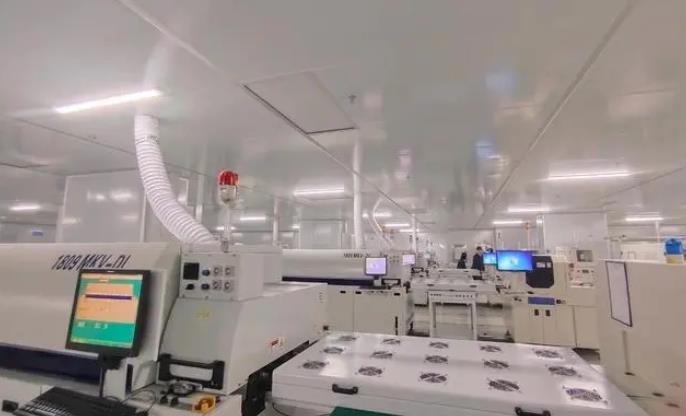As we all know, SMT manufacturing factory has strict management requirements for the production area, not only 5S should be done well, but also have strict requirements for temperature and humidity management. The main purpose is to ensure the quality of soldered PCBAs and improve the production efficiency of SMT patches. Suitable temperature and humidity factory environment is one of the important factors to ensure the quality of PCBA soldering.
If the environmental conditions in the smt factory are not well controlled,it may damage the components of the electronic products and the soldering effect,and eventually lead to the failure of the whole PCBA board.High humidity in the manufacturing environment can lead to many serious problems,for example,solder paste absorbs too much moisture,which can easily lead to bridge short circuits,solder balls,air bubbles (especially in BGA solder joints) during the reflow soldering process.The flux in the solder paste component evaporates too quickly,causing the paste to become dry.In the printing process,it is easy to cause leakage,less tin,sharpening and other phenomena.High ambient temperature may lead to oxidation of the solder paste part,flux evaporation,affecting the soldering effect of PCBA.
So how should we control the temperature and humidity in the SMT factory?
Temperature and humidity requirements
The optimum temperature in the SMT factory is 25±3 degrees Celsius.
The best humidity in the SMT factory is 45±15% relative humidity.

SMT manufacturing
The Hazards of Unreasonable Temperature and Humidity Control
High humidity:
High humidity in the manufacturing environment can cause many serious problems:
Slumping:Solder paste receives too much water and causes bridging during reflow.
Solder balls (or ‘popcorn’):Too much water is absorbed into the paste,causing poor agglomeration.
Venting:Excessive water under ground support,especially under BGAs,can lead to increased pressure.In some cases,the lid may be blown off.
Low Humidity:
Flux evaporates too quickly,causing the solder paste to dry out.This in turn leads to poor sample release and insufficient solder joint defects.
High Temperature:
As high temperatures decrease,the viscosity of the solder paste decreases. This can lead to a number of problems:mainly paste smearing and collapse - in addition to defects such as bridging and solder balling, e.g. drainage. Higher temperatures may also lead to additional oxidation of the solder, which can affect solderability.
This affects solderability.
Low temperatures:
If the temperature is too low,solder paste viscosity may increase.This can lead to undesirable printing behaviour, such as release and rolling,as well as print voids where the adhesion is too strong to print correctly.
Cleanliness Requirements for SMT Manufacturing Plants
Ensure that the SMT factory area is free of dust, equipment and components are clean and free of corrosive substances to minimise misrepair of SMT equipment and improve production progress.The optimum cleanliness of the factory area is about BGJ73-84.
The above is the SMT manufacturing plant on the temperature and humidity and cleanliness requirements of the introduction, want to know more about SMT manufacturing and PCBA information knowledge, you can pay attention to iPCB.